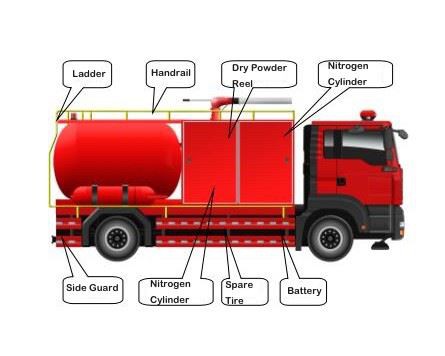When planning a construction project, understanding the logistics behind concrete delivery is crucial. One of the most common questions that arises is, “how much concrete does a truck hold?” This article delves into the various aspects of concrete trucks, their capacities, types, and practical tips for estimating how much concrete you will need for your project.
Understanding Concrete Trucks
Concrete trucks, also known as cement mixers, are specialized vehicles designed to transport and mix concrete. The capacity of these trucks can vary significantly based on their design and purpose. Generally, the size of the truck’s drum and its overall configuration will dictate how much concrete it can carry.
Types of Concrete Trucks
There are several types of concrete trucks, each suited for different scenarios. Below are the main types:
- Standard Mixer Trucks: These trucks are equipped with a rotating drum that keeps the concrete mixture fresh while transporting it.
- Volumetric Mixers: These trucks mix concrete on-site, providing precise control over the materials and water ratio.
- Concrete Pump Trucks: These trucks transport concrete via a pump system directly to the location needed, helpful for hard-to-reach areas.
Standard Concrete Truck Capacity
Most standard concrete trucks can hold between 8 to 12 cubic yards of concrete. However, the specific capacity often depends on the manufacturer’s specifications. The most common size for a concrete mixer truck is 10 cubic yards.
| Truck Type | Capacity (Cubic Yards) |
|---|---|
| Small Mixer Truck | 6 – 8 |
| Standard Mixer Truck | 8 – 12 |
| Large Mixer Truck | 12 – 16 |
| Volumetric Mixer | Varies (up to 10) |
Factors Affecting Concrete Truck Capacity
1. Truck Size and Design
The size and design of the concrete truck play a crucial role in its holding capacity. Trucks designed for standard construction projects tend to have larger drums, allowing them to carry more concrete compared to smaller trucks used for residential jobs.
2. Local Regulations
In some regions, local laws may dictate the maximum load size for vehicles on specific roads. It’s essential to be aware of these regulations as they can limit how much concrete a truck can carry without incurring fines or needing special permits.
3. Type of Concrete
Different types of concrete may have varying densities. For instance, lightweight concrete can take up more volume with less weight, affecting how much a truck can legally carry. Understanding the type of concrete you are using can aid in accurately estimating the load.
Calculating the Amount of Concrete Required
Before ordering concrete, knowing how much you need is vital. Here are common methods for calculating the required amount:
1. Volume Calculations
The most straightforward way to estimate the amount of concrete needed is by calculating the volume of the area you intend to fill, using the following formula:
Volume = Length × Width × Height
Make sure all measurements are in the same units (feet, meters, etc.) for accurate results.
2. Concrete for Slabs
For concrete slabs, an example calculation would be:
- Length: 10 feet
- Width: 5 feet
- Height: 0.5 feet
- Volume: 10 × 5 × 0.5 = 25 cubic feet
3. Conversion to Cubic Yards
Since concrete is typically measured in cubic yards, convert cubic feet to cubic yards by using the formula:
Cubic Yards = Cubic Feet ÷ 27
For the example above:
25 cubic feet ÷ 27 = 0.93 cubic yards
4. Adjusting for Waste
When ordering concrete, it’s advisable to order a little extra to account for spillage, over-excavation, or irregularities in the forms. A common practice is to add 10% to your calculated volume.
Practical Tips for Ordering Concrete
1. Consult with Your Supplier
It pays to have a conversation with your concrete supplier beforehand. They can give you insight into the truck capacities they have and help you determine the best amount for your project.
2. Schedule Delivery Timely
Concrete needs to be poured promptly after mixing to ensure it maintains its desired consistency. Ensure you have everything on-site and organized before the truck arrives.
3. Plan for Accessibility
Ensure the delivery site is accessible for the concrete truck. Review the driveway width, height clearance, and any obstacles that might impede the truck’s access.
Common Uses of Concrete in Construction
1. Foundations
Concrete is the backbone of most building foundations. Understanding how much concrete your foundation will require is crucial to ensure structural integrity.
2. Driveways and Patios
Concrete driveways and patios can significantly enhance a property’s value. These applications typically require a lot of concrete and precise calculations regarding area and thickness.
3. Decorative Features
Concrete isn’t just functional; it can also be beautiful. Many homeowners choose to create decorative concrete features, which often necessitate careful planning regarding volume and truck load.
FAQs
1. How many cubic yards can a concrete truck hold?
Most standard concrete mixer trucks can hold between 8 to 12 cubic yards of concrete.
2. How do I know how much concrete I need?
You can calculate the required concrete amount by determining the volume of the area to be filled, typically using the formula: Volume = Length × Width × Height.
3. Should I order extra concrete?
Yes, it is advisable to order an extra 10% to account for spillage, over-excavation, or irregularities in your forms.
4. Can I use a smaller truck if I need less concrete?
Yes, many suppliers offer smaller trucks designed for residential projects that require less concrete, typically holding around 6 – 8 cubic yards.
5. What affects the price of delivered concrete?
The price of delivered concrete can be affected by the type, local market demand, truck size, and any additional services provided by the supplier.
6. What happens if I order too much concrete?
If you order too much concrete, you may need to find alternative uses for it, or in some cases, you may incur disposal fees if you cannot use it on-site.





